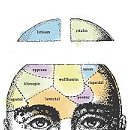Here is the information I presented to the CRPD Committee this morning:
Intervention by Tina Minkowitz at the opening of the 15th session of the Committee on the Rights of Persons with Disabilities – as delivered – March 29, 2016
Members of the Committee, Secretariat, respected colleagues. I speak to you today on behalf of the Center for the Human Rights of Users and Survivors of Psychiatry.
I present the results of a Campaign to demonstrate civil society support for the CRPD absolute prohibition of commitment and forced treatment. We asked participants to contribute their own knowledge and experience in the effort to persuade states to end the widespread suffering of those who are being medically tortured with no effective redress.
I will summarize the 41 submissions that are published on the Campaign website, which will be shared in electronic form with hyperlinks for easy reference. The materials are published in their original languages whether French, German, Spanish, Italian or English. A few other submissions are still coming in from people who misunderstood or were unable to finish before now, including from ENUSP (now added, see below).
The home page of the website is https://absoluteprohibition.wordpress.com. Some of the publications can also be found on collaborating blogs Mad in America, Sodis (Peru), PAIIS (Colombia), Dé-psychiatriser (France) and il cappellaio matto (Italy), and on participants’ individual blogs which are linked in their posts.
I begin with the memorials of those who died in psychiatry: M’hamed El Yagoubi writes about his wife and companion Nathalie Dale (in France). Dorrit Cato Christensen writes about her daughter Luise (in Denmark), and Olga Runciman dramatizes her anger and outrage over another death in Danish psychiatry. María Teresa Fernández speaks in honor of her brother (in Mexico), and also reflects from a moral perspective and as a person with a disability who works on the CRPD.
Survivors have a unique vantage point on degradations such as solitary confinement, restraints, injections, forced nakedness, brutality, authoritarianism, the stultifying effects of psychiatric drugs, the sheer destruction of electroshock, and sadistic psychological manipulations. How can we heal from abuse that society condones and that the law allows with impunity? For women forced psychiatry is sexualized and gendered, and should be recognized as both disability-based and gender-based violence. These writings stand as evidence of severe harm and as critique of laws and practices from the bottom up.
Jhilmil Breckenridge and Irit Shimrat evoke scenes of brutality, humiliation, and enforced subjection counterposed to the subjectivity of the survivor who is left to cope with her losses. Shimrat also looks back on a comic book hero she created as a young woman locked up on a psych ward for the first time.
Andrea Cortés describes how society seeks answers from experts, who punish people that don’t fit in, instead of learning to coexist; Katherine Tapley-Middleton relates how forced drugging caused her eyes to roll up in her head, and the nurses withheld a side-effects remedy; Roberta Gelsomino evokes frustration and anger towards those who did not help and refused to see her as a person.
Initially NO (see full original) combines political art and testimony to show how her rights under the CRPD were systematically negated by psychiatric violence; Anne Grethe Teien counters Norway’s claim that it is not violating human rights by comparing its laws and practices with the CRPD and with her own experience. Pink Belette and Agnès, both in France, attest to brutality, authoritarianism, and meaningless review procedures; Pink Belette also uses humor to rebuke psychiatric arrogance.
Connie Neil shares her journey with anger and grief over the destruction wrought by forced electroshock, and finally a possibility of forgiveness; Eveline Zenith describes and analyzes the abusive character of psychotherapy that entails re-traumatization; Corrine A. Taylor relates how she stopped psychiatric drugs in the face of a doubting psychiatrist and calls for everyone to have the same chance; Christian Discher documents the taunting of a young man for his homosexuality as part of his confinement.
Lucila López, a user and survivor of psychiatry, a mother, and a social psychologist, discusses a range of issues related to commitment and forced treatment, including iatrogenic harm, Argentina’s national mental health law, the pathologization of poverty, and the situation of young people affected by consumption of legal or illegal drugs.
Added: Jolijn Santegoeds calls for care not coercion in the Netherlands, and for compensation to survivors, appending her personal experience “16 years old, depressed and tortured in psychiatry.”
Researchers, scholars, lawyers, and clinicians, among them survivors and allies, express their adherence to the Campaign and build our knowledge base.
Robert Whitaker, journalist and founder of Mad in America, and Peter C. Gøtzsche, MD, researcher with the Cochrane Institute, each make a case against forced treatment from a medical standpoint. Clinician Jose Raul Sabbagh Mancilla in Mexico unconditionally supports the absolute prohibition of commitment and forced treatment. Psychologist Paula J. Caplan, PhD discusses inherently illegitimate psychiatric diagnosis as the entry point into human rights violations.
Karlijn Roex, PhD candidate in sociology, counters the use of “danger to self or others” to justify coercive psychiatric interventions, through scientific arguments, ‘user’ narratives, and moral principles. Anne-Laure Donskoy, survivor researcher, highlights the adoption of coercive mental health methods to enforce work requirements on benefits recipients in the UK.
Linda Steele, lecturer in law, characterizes commitment and forced treatment as disability-specific forms of violence condoned by domestic law and thus not amenable to legal recourse. Lawyer Francisca Figueroa notes the tension between the CRPD absolute prohibition and Chilean laws and practices condoning forced treatment. Documenta shared videos from its campaign against the system of inimputabilidad and security measures in Mexico, including a complaint under the CRPD Optional Protocol.
Bonnie Burstow, scholar and activist who advocates abolition of psychiatry itself, welcomes the Guidelines on Article 14 which clarify the absolute prohibition on forced treatment. Sarah Knutson makes the case for 100% voluntary treatment as an ex-lawyer, ex-therapist survivor activist, and presents an alternative approach to conflict and crisis.
Organizations and activists shared their advocacy and calls for action related to the absolute prohibition.
Added: European Network of (ex-) Users and Survivors of Psychiatry (ENUSP) counters the positions of the Human Rights Committee and the Subcommittee on Prevention of Torture in conflict with the CRPD and argues for real development of mental health care starting from the premise that forced psychiatric interventions must be banned.
Added: Fiona Walsh, survivor and human rights defender, reports on Ireland’s enactment of CRPD-noncompliant capacity and mental health legislation.
Erveda Sansi explains how Italian law still permits commitment and forced treatment in civil and forensic institutions. il cappellaio matto shares an interview with Dr Giorgio Antonucci on his work to abolish forced treatment in the 1960s that remained incomplete.
Coalition Against Psychiatric Assault created a video and petition calling on the Canadian government to withdraw its reservation that perpetuates compulsory treatment. Die-BPE of Berlin details the law and practice in Germany that allows substitute decision-making on the basis of a “lack of insight” standard, which violates the CRPD.
Asociación Azul calls for sweeping changes to allow people to be free and enjoy the same rights as others in their communities; survivor activist Don Weitz calls for class action suits and criminalization of forced psychiatric treatments and involuntary commitals; Jules Malleus shares a view of psychiatry as a destructive machine, utilizing images from dystopian films to make the point; Ana María Sánchez calls for creative public policies beyond the elimination of commitment and forced treatment.
******
This concludes the summary of materials that constitute the Campaign. I hope it will strengthen our common motivation and determination to put an end to medicalized torture and insist on consistency among all human rights mechanisms global regional and national to ensure no person remains in a situation of commitment and forced treatment in violation of the Convention. We need to not allow this issue to be left behind in the SDG monitoring, in work on the rights of women and girls with disabilities, in the COSP, or in any other CRPD implementation. It is a huge task for all of us, and survivors and victims remind us of why it cannot be forgotten.
The Campaign will have a second phase, both to reach out again to regions that remained unrepresented, and to pursue common interests that emerge in the materials. For those who are interested I will plan to schedule public discussions via Skype or web conferencing within the next few months, and I can be contacted through the Campaign website absoluteprohibition.wordpress.com and also on Facebook and Twitter as Tina Minkowitz and also on the official CHRUSP page.
Thank you.














